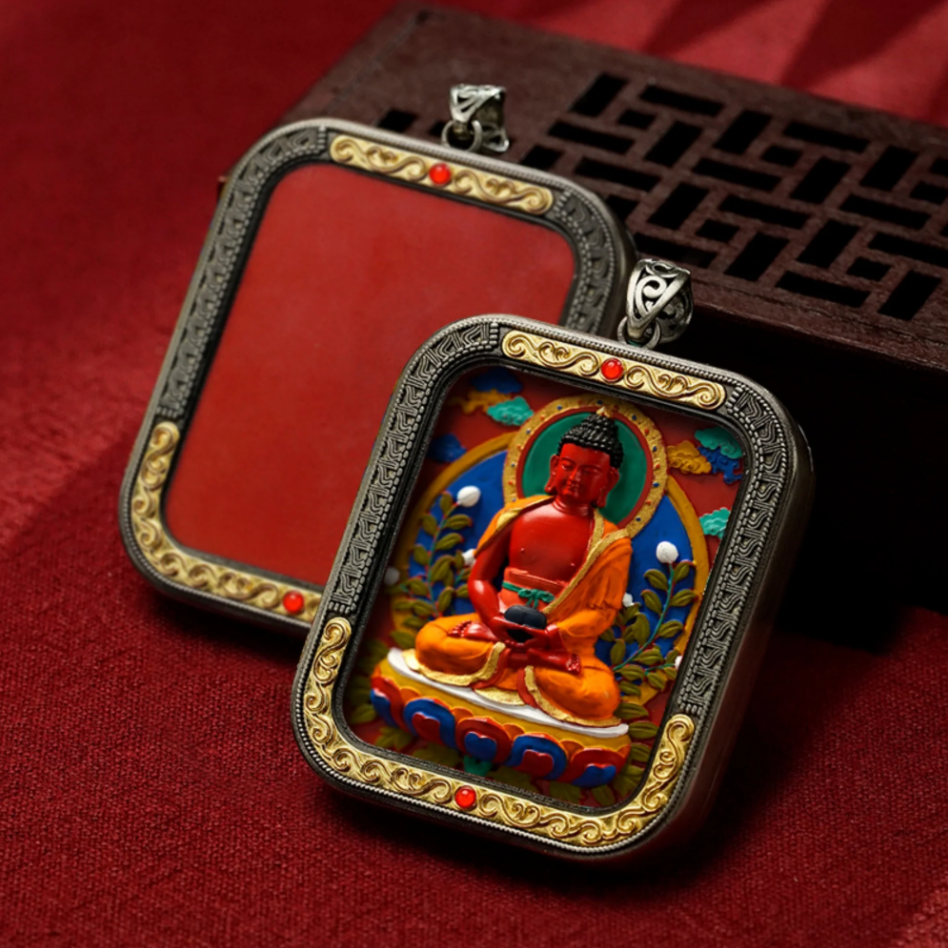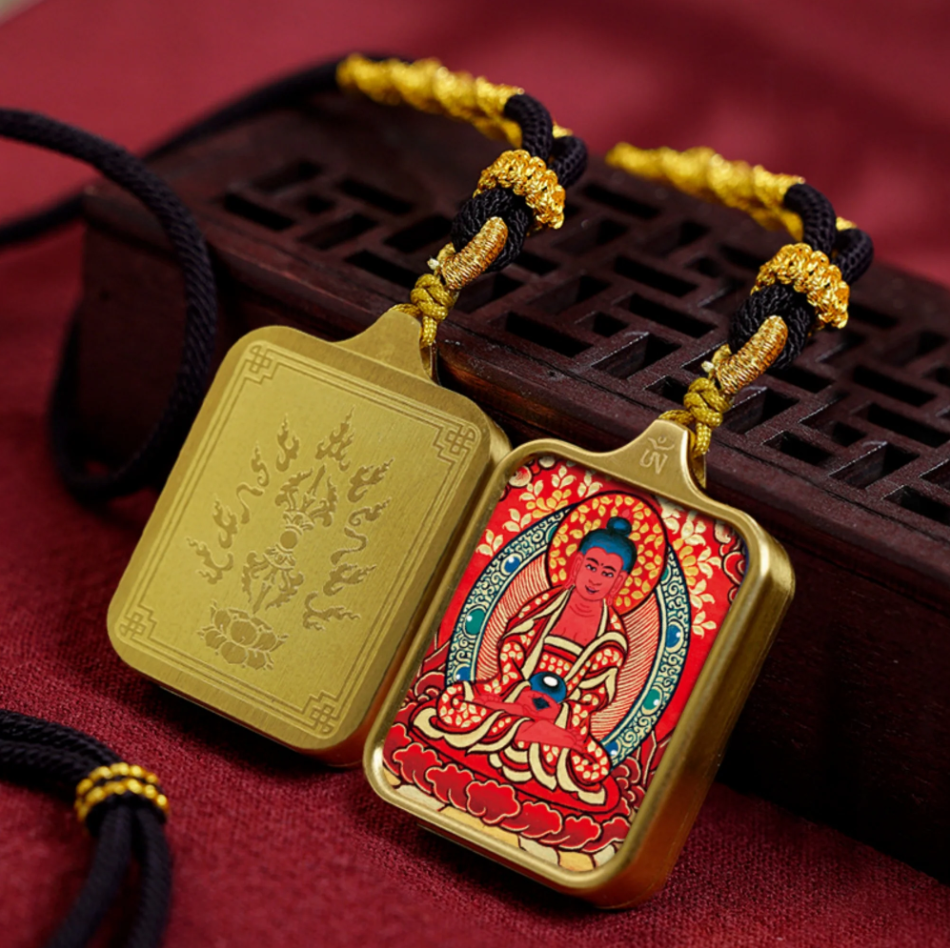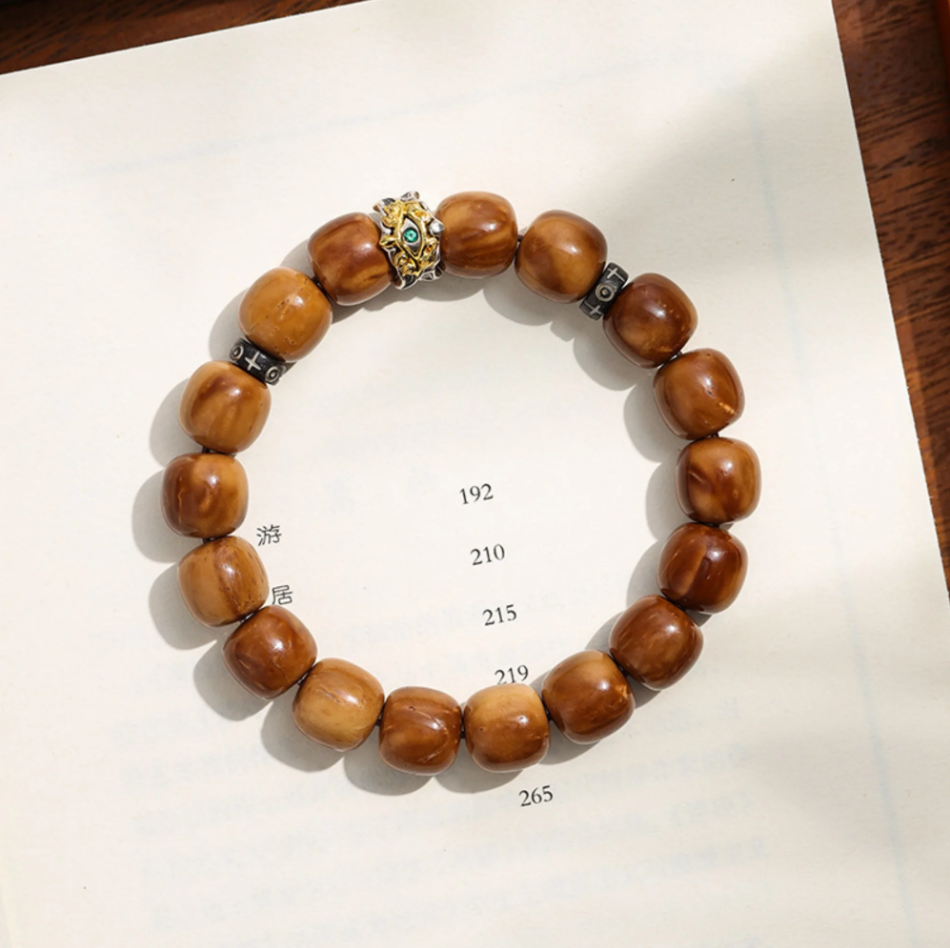类型:
Natural Black Agate Tibetan Silver Thangka Pendant Replacement Chain
类型:
Fanchen·Hand-painted Tibetan Thangka pendant necklace amulet
类型:
Fanchen·Hand-Painted Thangka Red Sand Brass Pendant Necklace (Ga Wu Box)
类型:
Fanchen·Hand-painted thangka cinnabar white copper pendant necklace (Gawu box)
类型:
Natural Black Agate Tibetan Silver Thangka Pendant Replacement Chain
类型:
Fanchen·Hand-painted Tibetan Thangka pendant necklace amulet
类型:
Fanchen·Hand-Painted Thangka Red Sand Brass Pendant Necklace (Ga Wu Box)
类型:
Fanchen·Hand-painted thangka cinnabar white copper pendant necklace (Gawu box)
Preserving the Splendor of the Nation
We always uphold our reverence for ethnic culture, so that you can own Tibetan treasures that combine cultural value with practical aesthetics.
A set that embodies the faith and craftsmanship of the snowy plateau
Each piece of jewelry embodies the wisdom and tradition of Tibetan Buddhism, bringing you peace and protection.

Authentic Buddhist treasures from Tibet
Fanchen·Hand-Carved White Copper and Tibetan Silver Sandalwood Buddhist Pendant
The core products



Inheriting the craftsmanship of the snowy plateau and cherishing the national culture
The Thangka necklace, centered around a "wearable miniature Thangka," cleverly blends thousands of years of Tibetan culture with personal aesthetics, serving not only as jewelry but also as an auspicious object carrying faith.
The striking color contrast not only showcases Tibetan style but also subtly conveys the auspicious meaning of peace and prosperity.
We're answerable!
Each piece of jewelry embodies the wisdom and tradition of Tibetan Buddhism, bringing you peace and protection.
Check if you can find them here or
Contact us

How long does shipping take?
How long does shipping take?
All orders are typically shipped within 3 business days. shipping can take 6-12 business days, depending on the destination and customs processing times. You will receive a tracking number once your order has shipped so you can monitor its progress.
Does my piece come in any packaging?
Does my piece come in any packaging?
Yes, every item comes in our signature, eco-friendly packaging, designed to protect your product and add a touch of luxury to your unboxing experience.
Do you ship internationally?
Do you ship internationally?
Yes, we ship internationally to most countries. Shipping times and costs vary by location. Please check our shipping policy for more details on international orders.
What payment methods do you accept?
What payment methods do you accept?
We accept PayPal. Rest assured, your payment information is safe and secure during the checkout process.
Blog posts
Zhajilam: The Multifaceted Tibetan Goddess of Wealth
Zakiram — also spelled Zha Ji La Mu, Zaki Lhamo, or Zhaqi Lhamo — is one of Tibet’s most vivid local goddesses. Part protector, part wealth-bestower, her image bridges popular folk belief and organized Buddhist practice. In many Tibetan communities she is honored as a powerful guardian who both protects households and supports livelihood. This piece traces Zakiram’s mixed origins and folk stories, explains how to recognize her iconography, and shows how contemporary artisans respectfully interpret her figure in Thangka pendants and amulets. Origins and folk stories Zakiram’s biography is complex and layered; over centuries local stories and formal religious narratives have braided together. One widely told version paints her as a Han-born woman of rare beauty whose life intersected with high Tibetan religious figures. After suffering injustice or violent death in the imperial setting, her spirit is said to have been recognized and transformed by a lama, eventually becoming a guardian deity in Lhasa and elsewhere. Other tellings emphasize her folk functions rather than a single origin: she appears as an effective local protector, a bringer of luck for merchants, and a guardian against misfortune. Like many territorial or folk deities across the Himalayan region, Zakiram’s story shows cultural adaptation — older local beliefs, Bon elements and mainland (Han) influences can all be read in her evolving image. Because various communities preserve different episodes and traits, Zakiram is best understood as a living, local figure rather than a single, uniform goddess. Iconography: how to recognize Zakiram Zakiram’s visual identity is striking and sometimes fearsome — a feature that marks her as a powerful protector. Typical iconographic markers include: Dark or black face with a fierce expression; wide, staring eyes. Long red tongue and bared fangs, a sign of her wrathful energy that can subdue harm. Skull crown or skeletal ornamentation, signaling her role in confronting danger and mortality. Chicken-feet (rooster claws) or talon-like feet — a distinctive, regionally resonant attribute that links her to older local spirit types and emphasizes her otherness. Ornamentation of jewels or ritual implements, sometimes combined with offerings like wine or meat in certain folk rites (noting that contemporary practice increasingly favors symbolic or vegetarian offerings). Despite the fierce features, devotees experience Zakiram as protective and responsive. Her wrathful appearance is read as compassionate method: forceful form used to remove obstacles and protect community welfare. Zakiram mantra and devotional practice Mantric formulas attributed to Zakiram vary by locality and lineage. Short recitations and longer liturgies both exist; in popular practice a brief Zakiram invocation or verse may be called on for quick petition (protection, success in business, relief from sudden trouble). Because phrasing and pronunciation can differ, it’s wise to learn a Zakiram mantra from a trusted teacher or local practitioner rather than rely on one written source. Devotional contexts range from household shrine offerings and village rituals to specific temple rites at the Zhaqi (Zaki) monastery where her cult is centered. In many communities, Wednesdays (or other locally significant days) are favored for making requests and offerings. How artists render Zakiram in Thangka pendants and amulets Representing a wrathful, place-based figure like Zakiram on wearable art requires sensitivity. Artisans and designers typically make choices that balance recognizability with respect: Scaled detail, simplified fierceness: On a small Thangka pendant or amulet, artists often keep Zakiram’s key markers (dark face, crown, tongue) but reduce background clutter so the image reads clearly at a glance. Material language: Brass and bronze (traditional ritual metals) carry an earthy resonance appropriate to a territorial guardian; silver may be used for pieces meant for daily wear. Turquoise or coral inlays echo Tibetan color traditions and add devotional value. Gawu and shrine formats: Tiny gawu (shrine) pendants let wearers carry a protected image or short mantra card; the exterior may be engraved with Zakiram’s silhouette or protective iconography. Mantra integration: Rather than printing full liturgies, makers often include micro-engraved syllables on the reverse or inner rim of a ring so the devotional element remains intimate and not publicly displayed inappropriately. Respectful restraint: Contemporary makers mindful of cultural issues avoid caricature. They consult with local artists or monastic authorities when producing images intended for ritual use. These choices help present Zakiram as both a culturally specific guardian and a wearable focus for devotion. Etiquette, care, and ethical sourcing If you’re drawn to a Zakiram pendant or amulet, consider these practical and respectful guidelines: Learn first: Ask about the iconography and any local rituals associated with Zakiram. Wearing an image without understanding can feel disrespectful to those for whom she is sacred. Placement and care: Keep the pendant clean and store it respectfully (in a pouch or on a small shrine) when not worn. Avoid putting sacred imagery in places considered unclean. Gifting: When giving a Zakiram image as a gift, include a brief note about her meaning and offer a short explanation of proper care and etiquette. Support artisans and communities: Prefer pieces made by named artisans or ethically sourced from Tibetan and Himalayan studios. Purchasing directly from makers or fair cooperatives helps sustain living traditions and local economies. Closing note Zakiram is a compelling example of how Tibetan religious life weaves together history, local memory, and practical devotion. Her fierce image reassures many: even powerful problems can be met and transformed. For those interested in Zakiram goddess imagery, the best approach is curiosity balanced with respect — learn from local sources, choose ethically made pieces, and let an image serve as a prompt for thoughtful devotion rather than mere fashion.
了解更多Amitabha Buddha's meaning: Amitabha Buddha's promise and jewelry symbolizing that promise.
Few names in East Asian devotional life are as quietly present as “Amituofo” — the Chinese invocation of Amitabha Buddha For many lay practitioners, that single phrase holds reassurance: a promise of light, a focus for daily compassion, and a simple practice anyone can use. This post explains the meaning and function of Amituofo, shows how Amitabha imagery is translated into approachable jewelry (from minimalist necklaces to tiny Thangka pendants), and offers a short daily dedication you can pair with an Amitabha pendant What “Amituofo” means “Amituofo” is the Chinese rendering of the Sanskrit name Amitabha, literally “Infinite Light” or “Boundless Light” (sometimes paired with “Infinite Life”). In Pure Land traditions Amitabha made a set of vows to create a pure realm — the Western Pure Land — where beings can be reborn and complete their spiritual training. For many laypeople, calling Amitabha’s name is not only about afterlife aspirations; it’s a present-moment practice that calms the heart, steadies attention, and cultivates a sense of refuge. How invocation functions in everyday practice Reciting “Amituofo” can be done anywhere, and that accessibility explains its widespread use. Common lay practices include: Short invocations: repeating “Amituofo” several times during mundane tasks to return attention to kindness. Nianfo practice: longer, mindful recitations using a mala to count repetitions for concentration and devotion. Dedications: offering positive intentions after daily recitation — for loved ones, for the sick, or for the well-being of all beings. For many families, the name becomes a soft background thread of devotion: said before meals, uttered during care for elders, or whispered when someone is anxious. Amitabha imagery in wearable forms Jewelry gives these devotional practices a portable presence. Artisans translate Amitabha’s calming presence into small objects that invite remembrance rather than spectacle. Typical forms include: Minimalist pendant: a small engraved disk or narrow bar bearing the characters “Amituofo” or a simple lotus motif. Subtle, wearable, and suitable for everyday life. Thangka pendant in a gawu: a tiny hand-painted Amitabha image housed inside a brass gawu (shrine) box. This format echoes traditional portable shrines and keeps the image protected and private. Mantra-band rings and inner inscriptions: micro-engraved syllables on the inside of a ring or back of a pendant create an intimate devotional element that’s not outwardly visible. Materials tend to reflect both tradition and durability: solid brass or bronze for an earthy, ritual tone; S925 sterling silver for everyday wear; and protective enamel or glaze for painted miniatures. Making a pendant part of your devotion An Amitabha pendant becomes meaningful when paired with concise, repeatable practice. Try this short routine: Morning three-breath dedication (1–2 minutes) Hold your pendant or touch it lightly over your heart. Take three slow, full breaths. Say “Amituofo” aloud or silently once per breath, three times total. Offer a brief intention: “May this day be calm. May all beings be safe.” Put the pendant on and move into your day. That short ritual links the object to a steady inner habit — far more effective than leaving the pendant as an unlived symbol. Etiquette, care, and gifting A few respectful practices help preserve the pendant’s devotional value: Placement: wear the pendant above the waist and avoid places considered unclean (bathrooms, the floor). Storage: when not worn, keep it in a small pouch or on a simple home altar or gawu shelf. Cleaning: wipe metals with a soft cloth; avoid chemical cleaners if the piece is hand-painted. Consecration: if a pendant has been blessed by a lama, follow any suggested handling guidance; if not, a small personal dedication is an appropriate first step. Gifting: include a short note explaining the meaning of “Amituofo” and a gentle suggestion for the first dedication — it transforms a gift into an invitation, not a product. Why jewelry can matter Amitabha devotion isn’t about image collection; it’s about a living habit. Jewelry that respects that intention matches quiet design with cultural sensitivity. Whether a pendant serves as a private reminder to breathe and be kind, or as a devotional focus for daily recitation, its value lies in how it helps you return to a steadier mind.
了解更多How to Customize a Thangka Pendant: A Buyer's Guide
Hand-painted Thangka pendantMore than just an ornament—it's a sacred image worn close to the body. Each piece blends centuries of Buddhist art with modern craftsmanship, serving as both decoration and amulet. If you've ever wondered how to customize your own Thangka jewelry, this guide will walk you through the entire process—from choosing your deity to the final blessing. 1. Begin with Intention Before sending any request, take a quiet moment to reflect on what you hope your pendant will embody. Do you seek guidance for your spiritual path? Protection for travel? Support in healing or focus? Different Thangka deities represent different blessings: Medicine Buddha— healing, clarity, and balance Yamantaka— protection and overcoming obstacles Palden Lhamo(Zachik Lhamo) — courage and strong guardianship Yellow Jambhala:A deity of wealth, aiding in eliminating poverty. Green Tara:Known for swift action in relieving suffering. Zhaqi Lhamo(Zakiram扎基拉姆):A revered goddess in Tibetan Buddhism, symbolizing good fortune, protection, wealth, and happiness. Amitabha Buddha: Symbolizes infinite light, wisdom, and compassion. Acala (Fudo Myo-o): A protector deity, representing courage and determination. Vairocana: The source of all light and wisdom. Mahasthamaprapta: Illuminates with wisdom, aiding in breaking free from reincarnation. Samantabhadra: Inspires practitioners with great vows and endless virtue. Four-Armed Avalokiteshvara: Represents boundless compassion, providing swift assistance. Manjushri: Embodies wisdom, wielding a sword to cut through ignorance. Akasagarbha:Brings wisdom and prosperity, ideal for students and career growth. Yellow Jambhala: A deity of wealth, aiding in eliminating poverty. Fox Deity: Represents spiritual wisdom and protection, rooted in local beliefs. Clarifying your purpose helps both you and the artisan align the pendant’s energy and iconography. 2. Contact us for consultation You can specify: The deity or figure you’d like (e.g., Medicine Buddha, Green Tara, or Vajrapani) The material and color of the Gawu Box setting (white copper, brass, or sterling silver) Any symbolic details you hope to include — such as lotus motifs, protective mantras, or seed syllables The more details you provide, the more closely the finished pendant will reflect your personal vision. 3. Reviewing Reference Images After receiving your message, we will reply with reference photos or similar finished Thangka pendants. This will help you better understand the various options and confirm your design preferences—ensuring that every detail meets your requirements before the artisan begins painting. At this stage, you can also ask questions about the accuracy of the images or the spelling of the Tibetan script, both of which are crucial for presenting the images with respect. 4. Confirm and Secure Your Commission Once a design is selected, a secure, personalized payment link will be created. After payment, the artist will begin hand-painting your pendant—a meditative process requiring precision, focus, and devotion. Each piece is hand-painted by the artist, layering natural pigments and then set into a metal base of your choice. Because the pendant is entirely hand-painted, the production time is 5 to 15 business days, depending on the complexity of the piece. Most custom pieces ship within 7 days. 5. Review Before Shipment Before the pendant is shipped, you’ll receive photos and videos of the completed piece via email. This step ensures you’re completely satisfied before it leaves the studio. Only after your confirmation will the team package it carefully for shipment. 6. Respecting the Sacred Nature of Custom Work Because every Thangka pendant is a one-of-a-kind sacred commission, does not accept returns or exchanges. Beyond craftsmanship, this is also a matter of respect — once a deity has been invoked through the painting process, it should not be treated as a replaceable item. 7. Questions to Ask Your Artisan To ensure you’re commissioning ethically and respectfully, here are some thoughtful questions you might include in your email: Is the Thangka artist formally trained in traditional painting techniques? What pigments or materials are used? Will the piece receive a blessing or dedication before shipment? How do you ensure iconographic accuracy and cultural integrity? A Final Thought To commission a Thangka pendant is to enter a small lineage — one where devotion, art, and ethics meet. Each pendant bridges worlds: the spiritual vision of the painter, the material beauty of the metalsmith, and the heartfelt intention of the wearer. Handled with respect, it becomes not just jewelry, but a lifelong companion on your path.
了解更多





























































